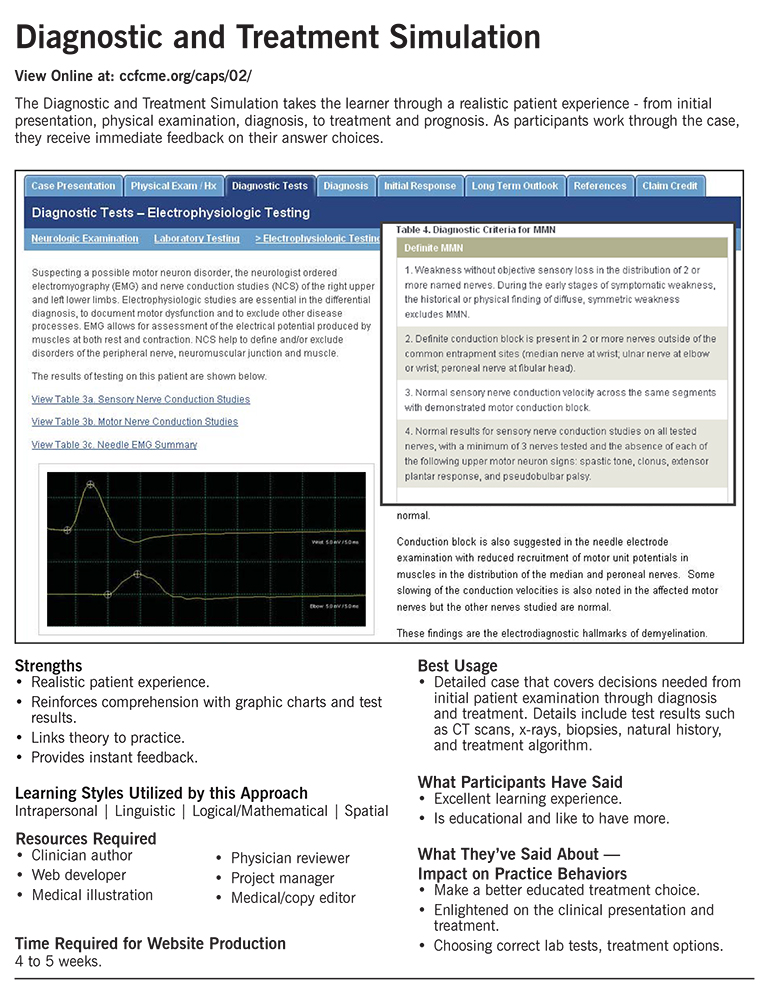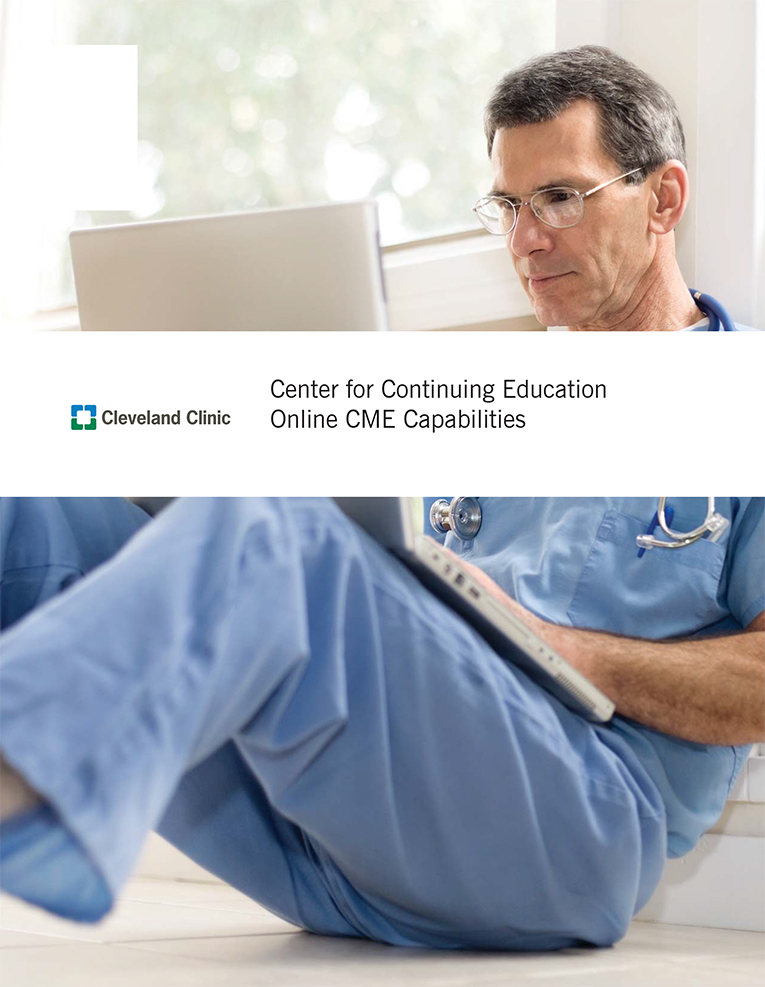Online CME Capabilities Brochure
Cleveland Clinic
Redefining Medical Education for a Digital World
About the project
We were looking for ways to improve the quality of the content on the website. The online medical resource section was the most visited section of the site. We felt as a department that if we could raise the quality of the educational activities that would translate in to better traffic. To accomplish this goal, we needed to inform physicians that there were other activity options available to them. We built the Capabilities brochure to communicate to the physicians of all of the tools they had available to them when they were planning an educational activity.
At the time of this brochures creation, flash was considered current technology and was used heavily in the creation of the interactive case modules and web modules. Today, flash is currently not an effective option, as it is not supported on mobile devices. Instead, HTML5 and CSS3 contain much of the technology needed to create and view video and animation that would be used in these modules.
The brochure informed them about various activity formats, strengths of the various programs, best usage and impact of their activity on physician’s practice. It also informed them about what test groups said about the activity types. This allowed the physicians concentrate their educational materials in formats that more suitable to the desired audience. Working with these guidelines would save both time and budgets for the physicians, as well as the attendees.
The Challenge
Our department seemed to be getting one type of learning activity for our site. Physicians were mostly concentrating on creating PowerPoint presentations presented in webcast format. Another issue was the companies that were sponsoring educational activities were losing their enchantment with webcast style of learning.
In order to expand the offerings and make an effort to impact physicians with different learning preferences, and continue to qualify for educational grants, we produced this brochure. Our hope was if the physicians creating content for our site knew about the different types of activities we could create, it would give them the knowledge and courage to experiment with different types of activities.
The Solution
Research
We felt that physician authors were working with partial information when planning educational activities. We devised to create a document that covered all of the different activity types and their strengths as well as potential audiences. I was the design lead for this project. We researched the different types of learning and learners as well as how to best approach each type. Then we cataloged all of the activity types currently on our site, and added other activity types that would be beneficial. I created a wire frame version of the brochure and after review, started populating it with content.
My Role
I laid out the brochure, created the images, wrote some of the copy, and handled the printing and binding of the final product. I also produced an eBook version for electronic distribution. I was responsible for creation and maintenance of the short URL’s used to demonstrate the activity types. We also looked up comments we’d received about all of the existing activities in our yearly reader poll.
Cognition
We discussed the best way to present each activity type, how to connect each activity type to a learner persona, and how each activity addressed each learner persona. One persona we used for this project was Dr. Wright, a GI physician in Texas that needs 6.5 more CME credits for his licensure review next month. He is a linguistic learner and learns best by reading the material. There are two available diagnostic and treatment simulation activities worth 1.5 credits each written by Clinic physicians from the Gastroenterology Department. He also chose a GI webcast series worth 4 credits to help satisfy his requirements.
Our other audience was physicians who wanted to share their knowledge and experience through an educational activity. For them we wanted to have the best information for them so they could make informed decisions about the way to structure their activity for their intended audience.
Deliverables
We distributed both printed copies and an eBook version of the completed brochure and it was distributed to all of the physicians that created content for our department and all coordinators that helped the physicians.

The Results

We began seeing more diverse collection of CME activities, using an appropriate learning style that greatly improved the quality of our content. The physicians did this with knowledge of how best to share information with their intended audience. The next year when Pharmaceutical companies started becoming more selective of the types of educational activities they would underwrite our department saw no measurable decrease in funding. Usage increased continuously for several years. Our website won accolades from national organizations specializing in medical education (see Awards).


